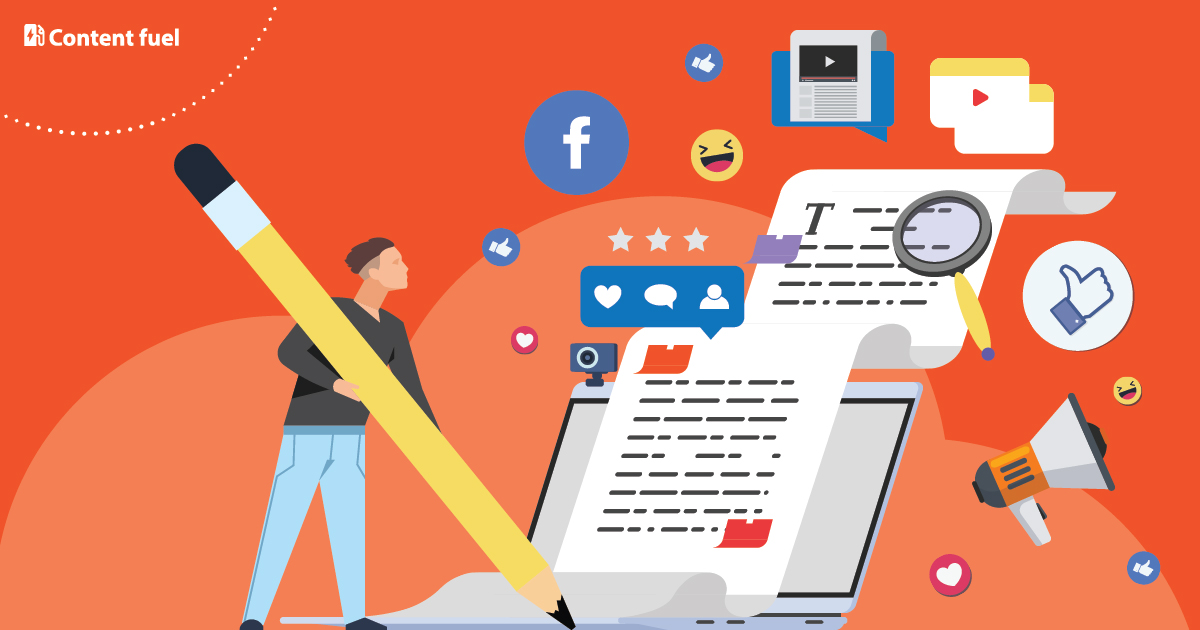08 Apr

Reaching 60.6% of internet users, Facebook is the world’s leading social media platform today. If you aim to drive your content distribution further, this is the platform you should use. Nothing comes close to increasing your reach other than this mighty channel.
Unfortunately, Facebook has a habit of continually altering its algorithms. This results in bloggers and brands getting fewer organic distribution. Luckily for us, there is a solution. That is, paid content distribution Facebook.
Why Paid Advertising is Better
Facebook’s popularity and broad reach make it an excellent channel for free content distribution. Who doesn’t want that? However, paid advertising provides more benefits than organically publishing your content.
Paid content distribution allows you to get in front of the right people. Ask any seasoned marketer, and they’ll tell you it’s better to reach your target audience than being seen by many. In short, quality trumps quantity any time of the day.
The Death of Facebook Organic Reach
As early as 2014, free advertising on Facebook has become more and more difficult. Hence, the death of Facebook’s organic reach. Marketing pros noticed their fans seeing less and less of their posts and updates. They have come to the conclusion that the free marketing ride is over for them on the platform. They have to pay up if they want people to see their content.
It’s ironic that what catapulted Facebook into popularity is the same thing that pulled it down. With too many businesses and individuals using it, getting attention has become a struggle.
Getting Started
Let’s get your paid content distribution on Facebook started. Here are the steps:
Step 1: Set Your Goals
Think first about why you’re advertising and what you aim to achieve. This is essential in creating the best campaign for your content. Goals such as increasing website traffic or boosting your engagement are some examples.
Step 2: Go to Facebook Ads Manager
If you haven’t done so, create an account on Facebook Ads Manager. You’ll see the types of ads they offer and a rough estimate of what your budget can get you. Create a Facebook Business page, follow the easy steps and start creating your ads.
Step 3: Choose Your Objective
There are 11 Facebook ad objectives you can choose from. Your choice will dictate what your ad campaign will be like, so make sure to choose wisely.
Step 4: Choose Your Audience
It’s essential that you know who your audience is, to begin with. This will help you choose who to show your Facebook ads to. But never worry, as the platform has tools to help you get to the right people at the right time.
Step 5: Set Your Budget
From daily budget to lifetime budget, Facebook lets you choose how you want to pay for your paid advertising. You can also manage the schedule, optimization, delivery, and other factors.
Step 6: Check Your Performance Metrics
Monitoring your ads’ performance can help you check and measure their success. From this, you can take out what’s not working and improve on what’s doing well.
How to Boost Content Distribution on Facebook
Boosting your content distribution on Facebook doesn’t end once you follow the steps mentioned above. Always remember that the platform is home to millions of people like you who’re looking to reach as many as they can. Here are a few tips you can follow to make sure that your efforts get rewarded:
Ensure That Your Content is Relevant
This is where the importance of knowing who your audience is comes to play. Your content has to be relevant to the exact people you’re targeting. Understanding who they are can help you write content that they’ll spend time reading.
According to Adam Mosseri, VP, Product Management, News Feed, “The goal of News Feed is to show people the stories that are most relevant to them.” Ensure that you create content that will pique your audience’s attention enough to get them to stop scrolling.
Analyze Your Results
Each time you post content on Facebook, it gives you data that you can use to improve your campaigns. The number of likes, shares, reach, and engagement rate can help you determine what stays and what should go in your campaign. It even has a breakdown of data by the type of post that you published.
The data you gather will give you insights into what the best performing posts are. You’ll be able to see what attributes these posts have so you can replicate them. This way, you can create content that matters to your audience.
Promote Your Best Performers
Now that you know which posts are doing well, promote them. This will help you generate new leads and get more people to consume your content. Search for your posts that have high organic reach as well. When you pay for their promotion, it even becomes more wide-reaching.
Facebook Ads Manager allows you to boost your best performers by giving you better control, select specific audiences, and split-test criteria better.
Leverage Retargeting Features
People reading your content will only be of any use to you if they get what you’re offering. Otherwise, what’s the point of selling when no one’s buying? What can you do in this instance? That’s right, retargeting is what you need.
Notice how, after visiting a website about folding bikes, you’ll see so many ads of the same folding bike on Facebook? That’s Facebook’s way of reminding you that you want that bike and that you should check it out again. The good thing about it is, you can also do that same strategy for your content distribution.
Final Thoughts
Creating the right content isn’t enough anymore. For good content to be where people will consume them, proper distribution is a must. To lead them down the sales funnel, you have to get them to notice what you’re publishing first. Content distribution on Facebook can be challenging, but the fruits of your labor are some of the best you’ll ever get.










